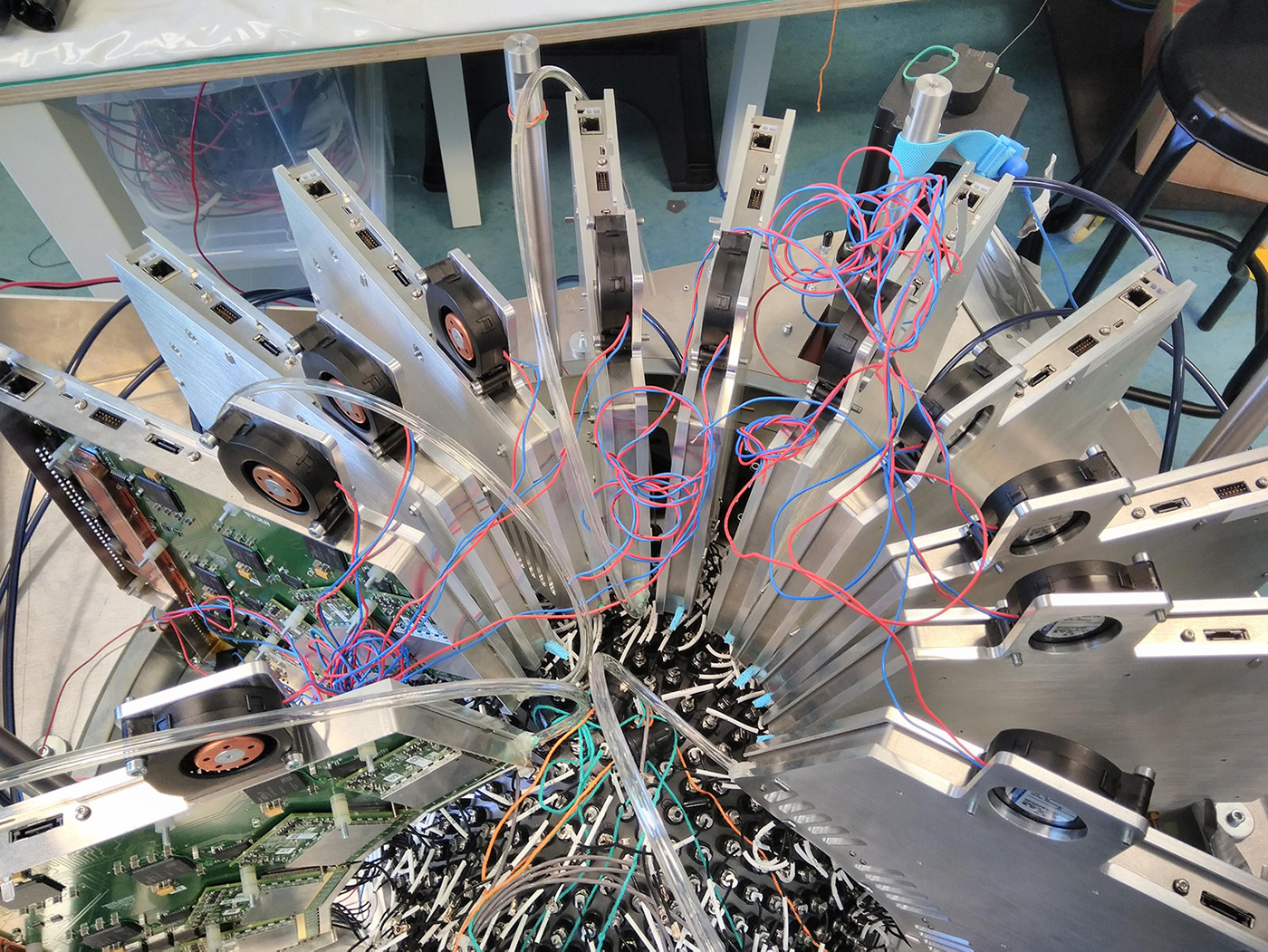
Photoacoustic Mammoscopy for evaluating screening-detected lesions in the breast

Objectives
Motivation
With Europe’s aging population, its high incidence of breast cancer, and its tightening health-care budget, [Rechel et al 2013, Ferlay et al 2013, Karanikolos et al 2013, Morgan & Astolfi 2015] there is an urgent need for an imaging technique that can disrupt the current paradigm by providing high specificity, contrast and image resolution, all at a sufficiently low cost that it can be made universally available. Photoacoustic (also called optoacoustic) imaging, [Wang & Hu 2012, Beard 2011, Ntziachristos & Razansky 2010.] in which the contrast is dependent on light absorption and which therefore offers spectroscopic (molecular) specificity, has the potential to be that technique. [Heijblom et al 2015a]
However, while the literature of the last 15 years has witnessed technological advances in photoacoustic breast imaging, these have been incremental and conservative steps, fragmented across various groups and companies. The end result is that many possibilities and opportunities have not been exploited or explored, and even after a decade and half following the first application of photoacoustic imaging in the breast, [Oraevsky et al 2001] we still describe the method tantalizingly as having potential and promise.
Concept
PAMMOTH’s objective is to develop, validate and begin exploitation of a dedicated breast imaging device for a significant impact in breast cancer diagnosis. The proposed device combines non-invasive 3D photoacoustic imaging and ultrasound imaging. The device will provide near real-time, full-breast, multimodal images to the radiologist. From the ultrasound mode, the radiologist will visualize anatomical features and extent of tumors, and from multiwavelength photoacoustics, she will see tumor vascularity. Quantitative spectroscopic photoacoustic images will be extracted off-line, providing the radiologist information relating to tumor physiology and function such as angiogenesis and hypoxia.
The choice of the relevant biological targets, and of the functionalities and technical principles applied in the PAMMOTH imager, will enable sensitive, accurate and quantitative measurements of these targets. This will provide relevant information to the radiologist to make accurate diagnosis with high specificity.
Realisation
The consortium aims to make the imaging device such
for all populations of women, with short time intervals between
positive screening and diagnosis, having high through-put, possessing no carcinogenic potential and causing no pain and discomfort to patients.
PAMMOTH’s specific strategic objectives are:
The complementarity and synergy within the PAMMOTH consortium allows us:
- To develop a clinical prototype of a dedicated breast imager using a combination of 3D photoacoustic imaging and laser-induced ultrasound imaging . This is created by integrating the sub-systems in 2 and 3.
- To develop the following hardware subsystems for the imager:
- A patient instrument interface comprising a hemispherical water-filled imaging tank in which the breast is immobilized.
- A compact tunable laser system comprising pump laser-optical parametric oscillator.
- A fiber-bundle based optical delivery system for photoacoustic excitation with a single input and multiple outputs distributed uniformly to provide the breast with homogeneous illumination.
- Ultrasound transmitters for performing ultrasound computed tomography.
- A ultrasound detector array optimized for high sensitivity, with a wide frequency bandwidth, and a wide angular acceptance angle. The array will be used to measure conventional photoacoustic signals, as well as laser-induced ultrasound signals from the breast.
- A fast Data Acquisition System (DAQ) comprising low-noise Analog Front Ends (AFEs) and with on-board memory and FPGAs for implementing real-time image reconstruction
- To develop the following hardware/software subsystems for the imager:
- Algorithms and software for reconstruction of photoacoustic and ultrasound images.
- A quantitative photoacoustic reconstruction algorithm to extract 3D tissue oxygen saturation maps from the multiwavelength photoacoustic data sets.
- To comprehensively prepare the ground for the clinical demonstration by
- Testing the imaging device and image reconstruction algorithms on newly developed stable, realistic tissue phantoms mimicking both optical and mechanical tissue properties of breast tissue and tumor tissue.
- Performing the medical instrumentation safety tests for laser exposure and electrical/mechanical aspects.
- Preparing the Clinical Study Protocol.
- To perform the validation of the imaging device in a clinical setting of patients stratified in subgroups covering invasive, in situ, and benign tumors. Images will be interpreted and compared with x-ray, ultrasound and MRI images for size, location and morphological features.
- To develop close and continuous user involvement by regularly updating and actively soliciting advise from the Advisory Committee comprising representatives of patient advocacy groups and key opinion leaders in breast radiology and pathology.
- To prepare exploitation of the systems and imaging device developed in PAMMOTH in the public private partnership setting involving a start-up company, key SMEs, end-user communities, patient groups, healthcare institutions and academic institution.